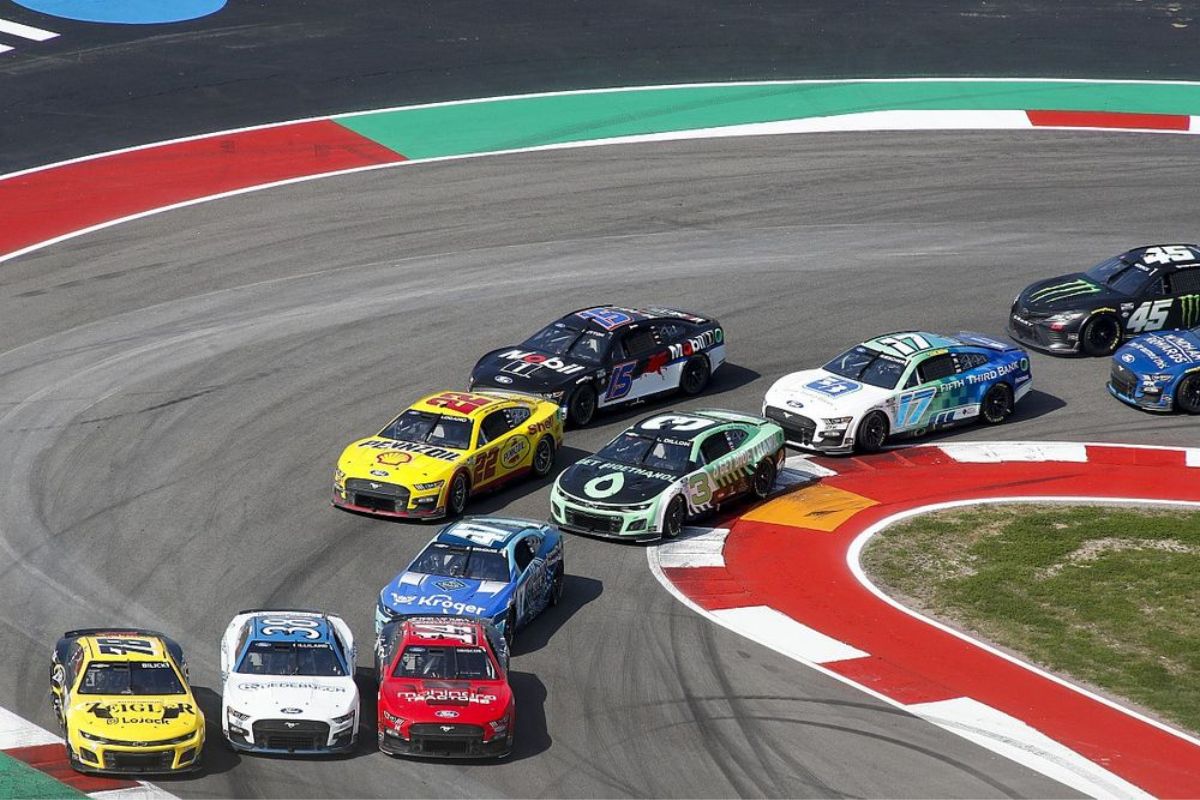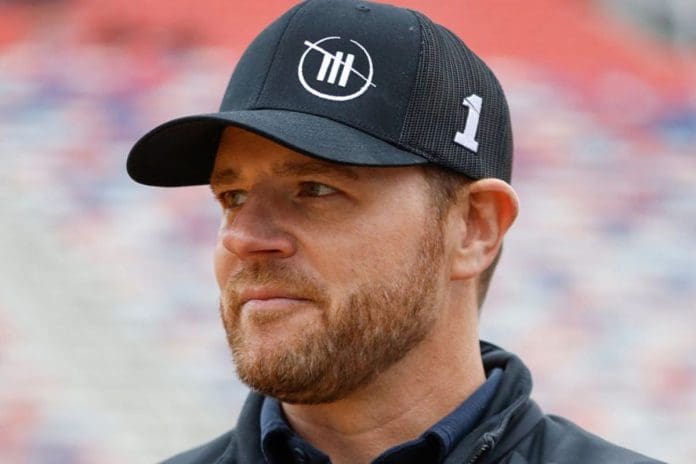Justin Marks Criticizes Next-Gen Cars: In a detailed examination of the financial implications of NASCAR’s Next-Gen car, Justin Marks’ critique highlights a significant shift in team expenditures, focusing on the unforeseen costs associated with advanced technological integrations. While the Next-Gen car was initially touted as a cost-saving measure, Marks reveals a complex scenario where expenses are not merely reduced but redistributed, impacting the economic strategies of teams like Trackhouse Racing. This observation invites further scrutiny into whether the financial burdens imposed by these technological advancements will ultimately improve the competitive integrity of the sport or lead to unforeseen consequences for team operations.
Key Takeaways
- Justin Marks criticizes the Next-Gen car for not significantly reducing overall team costs as promised.
- Increased expenses in technology and data analysis offset savings from standardized parts.
- Trackhouse Racing, led by Marks, struggles with balancing traditional and emerging cost factors due to this shift.
- Despite initial cost-saving goals, teams now face heightened financial pressure in competitive technology areas.
- Marks calls for NASCAR to reevaluate strategies to genuinely lower costs and maintain team sustainability.
Next-Gen Car: Promises vs. Reality
The introduction of NASCAR’s Next-Gen car was indicated as a cost-cutting breakthrough, yet recent insights from Trackhouse Racing’s Justin Marks suggest the reality has not lived up to these expectations. Initially, NASCAR’s Next-Gen car was designed to streamline operations and reduce overhead costs for teams by standardizing more parts and making the cars easier to assemble and maintain. This move was supposed to democratize racing to some extent, leveling the playing field between teams with varying budgets and resources.
However, Marks’ insights during his SiriusXM Radio interview paint a different picture. He detailed how, while direct costs associated with certain car components and assembly processes have decreased, the financial burden has merely shifted rather than diminished. The emphasis has moved towards high-tech areas such as advanced engineering solutions, sophisticated simulation tools, and extensive data mining operations. These fields require significant investment in both specialized equipment and highly skilled personnel to operate such technologies effectively

The unintended consequence of this shift is that while the surface-level costs of physical components might see a reduction, the budget remains bloated due to the escalated expenses in technological development and implementation. This reallocation of costs highlights a critical oversight in the initial cost-reduction strategy: it did not fully anticipate the increased reliance on, and the consequent costs associated with, emerging technologies that are now deemed crucial for competitive performance.
“What I think everybody didn’t quite anticipate is that the car did not reduce the cost to go racing. It just moved the cost centers around on the financials. It’s like, we don’t run the fab shop like we used to, obviously, but we have taken that cost and put it in other areas. We put it in engineering and simulation and data mining and all that kind of stuff,” Justin
Cost Allocation and Reallocation
Despite the standardization of parts from a single manufacturer, NASCAR teams have redirected their financial resources towards optimizing other competitive areas, thereby highlighting the complexities inherent in the cost structure of competitive racing. Initially, the Next-Gen car was introduced with the promise of cost containment through uniformity in car components. Yet, the reality has unfolded differently. Teams, ever driven by the imperative to gain competitive edges, have channeled their investments into areas not restricted by the new regulations—such as advanced simulation technologies, aerodynamic research, and personnel expertise in strategic roles.
This reallocation of resources brings to light a critical aspect of racing dynamics: the incessant pursuit of marginal gains. While the chassis and body of the cars may now be uniform, the latitude for innovation has shifted rather than diminished. Teams have intensified their focus on performance analytics, driver training, and even psychological conditioning, all of which require substantial investment. The broader implication is that cost reduction in one area can often lead to unintended cost increases in others, as teams exploit every available avenue to secure a competitive advantage.

Optimism Regarding Charter Agreement
Amid escalating costs, Justin Marks maintains a hopeful perspective on the progress of charter agreement negotiations between NASCAR and team owners. This optimism is particularly significant given the demands of the expiring current charter agreement and the ambitious financial requirements from the team owners’ side.
- Responsive Dialogue: Unlike previous instances, NASCAR has shown a consistent openness to addressing the concerns voiced by team owners. The ongoing discussions have not only been frequent but also substantial, focusing on genuinely actionable points rather than mere formalities.
- Urgency of Timeline: The looming deadline with the charter set to expire at the end of the season has infused a sense of urgency into the negotiations. This challenge is double-edged but has historically helped in catalyzing agreements in professional sports.
- Economic Pressures: The current economic state, influenced by increased costs of operation and competition, necessitates a more collaborative approach to revenue sharing. NASCAR’s understanding of these challenges may lead to a more favorable outcome for teams.
- Future Viability: Both parties are acutely aware of the need for sustainability in the sport. A fair and mutually beneficial agreement could safeguard the long-term viability of the teams and the sport, an objective that aligns stakeholders along a common goal.
Potential Positive Outcomes
Justin Marks’s hopeful stance on the charter negotiations suggests that a restructured agreement could lead to significant improvements in the financial and operational model of NASCAR teams. The ongoing dialogue between team owners and NASCAR executives holds the promise of transforming the sport’s economic landscape, potentially reducing the financial burden on teams while bolstering competitive parity. Marks’s optimism is rooted in the shared understanding between stakeholders about the necessity for a more vital business approach in the face of escalating costs.
“I’d say the light at the end of the tunnel is the fact that it has to be more cost-effective to run this business and I think NASCAR understands that. We’re having conversations around what costs look like in the new charter agreement that we are all working on. So I would look at that… Some of those conversations that we are having with NASCAR, out of respect for everybody should stay there. Out of those conversations are some real potential positives coming our way,” Justin
The restructured charter agreement could lead to several advantageous outcomes. Firstly, it may offer a more essential distribution of revenue, ensuring that all teams have a viable path to profitability and sustainability. This adjustment is important in maintaining a competitive field, which inherently improves the viewer experience and broadens fan engagement. Secondly, the revised agreement is expected to incentivize investments in technological innovations and team development, without the looming threat of unsustainable expenses.

Moreover, by addressing the financial disparities, NASCAR could stabilize the operational environment, allowing teams to focus more on performance and less on financial survival. This shift could lead to an increase in the quality of racing and, by extension, a stronger overall brand.
Should the negotiations conclude successfully, the outcome might not only remedy the immediate concerns highlighted by Marks but also set an example for future dealings in motorsports governance. The potential positive outcomes of these negotiations offer a guiding light of hope for a more balanced and exciting future in NASCAR racing.
News in Brief: Justin Marks Criticizes Next-Gen Cars
Justin Marks’ assessment of the financial implications surrounding NASCAR’s Next-Gen car highlights a significant disparity between anticipated and actual costs. This shift emphasizes the complexity of financial management within competitive motorsports settings, where technological advancements continually redefine cost structures.
It is crucial for teams to adapt strategically to these financial dynamics to sustain competitiveness. The situation also calls for a reevaluation of financial frameworks in sports to better align expectations with reality.
ALSO READ: Justin Marks Exposes: Plans to Lure Conor Zilisch to Trackhouse Racing!


